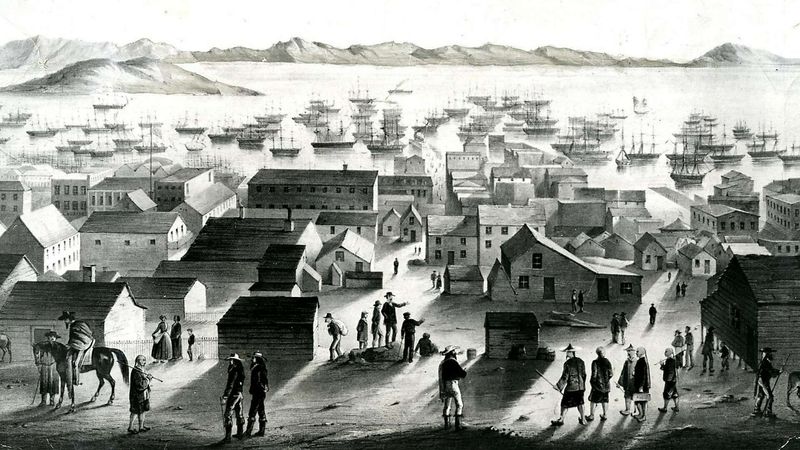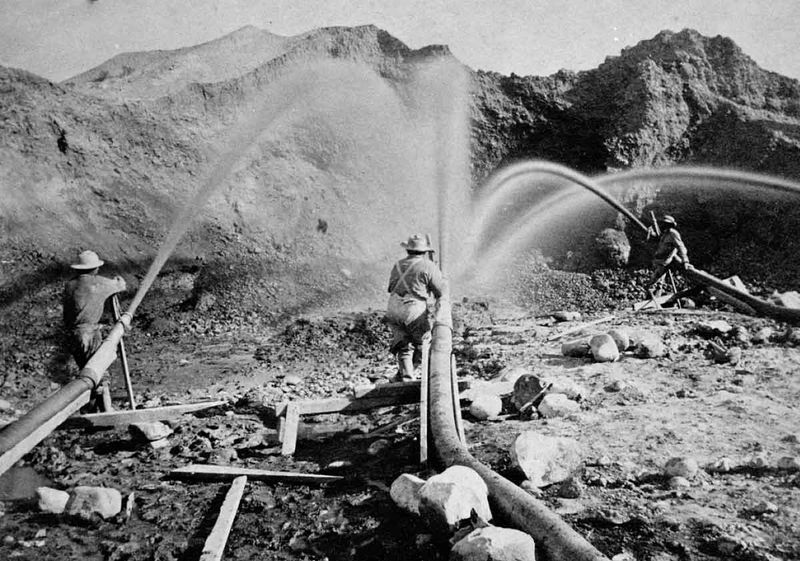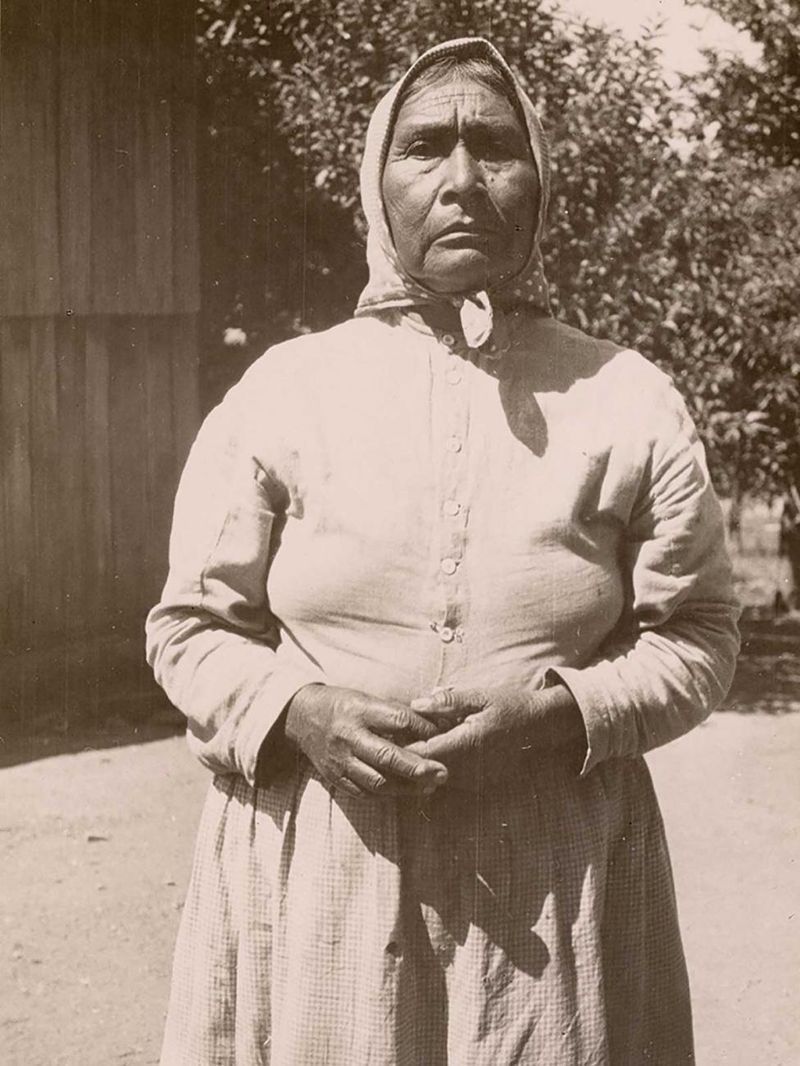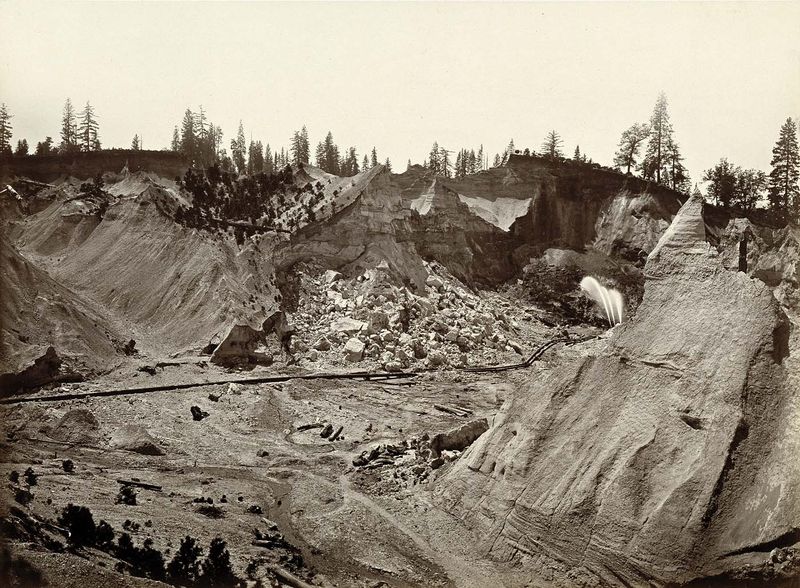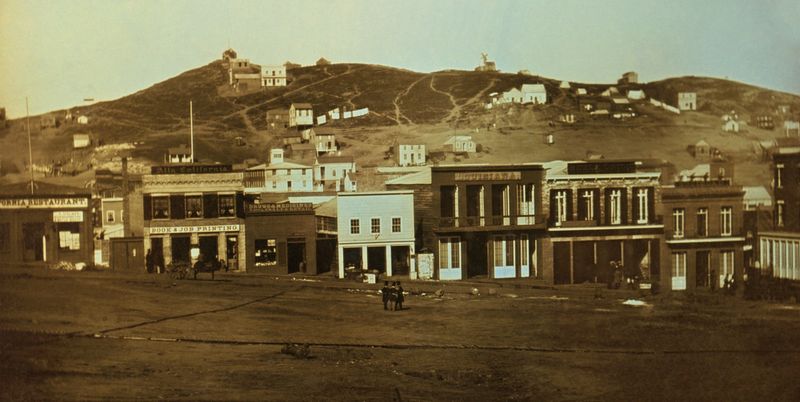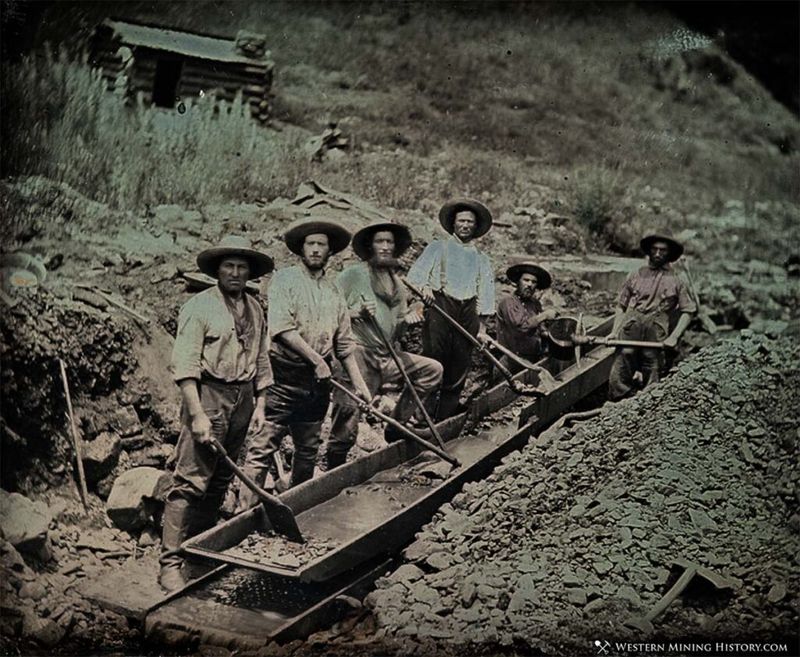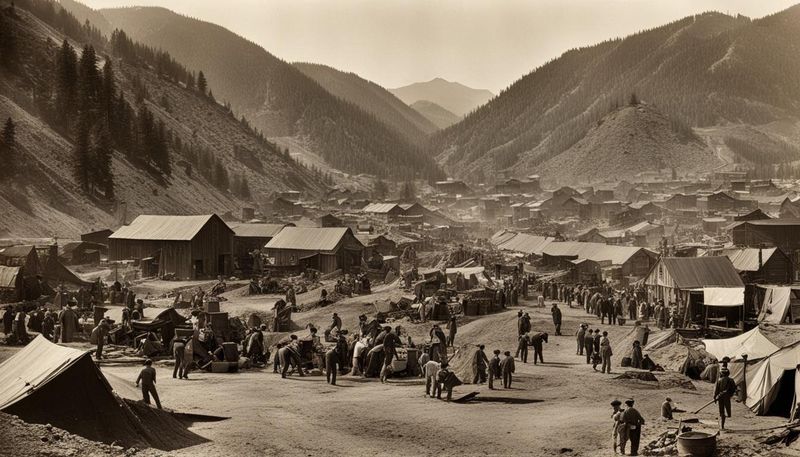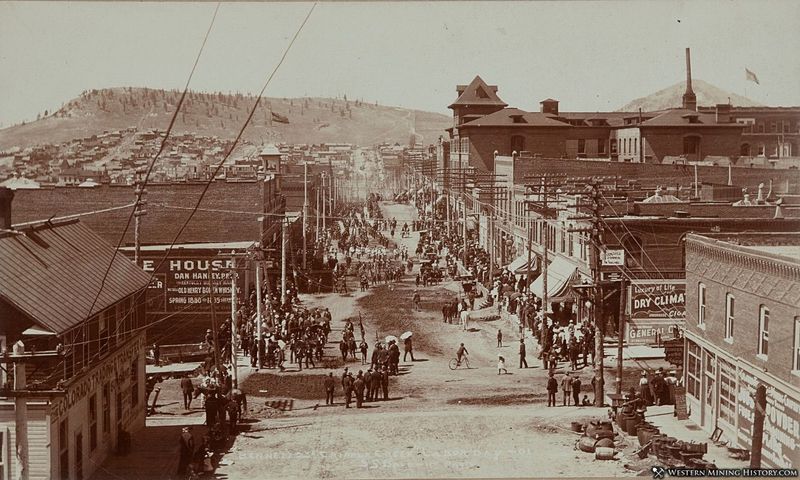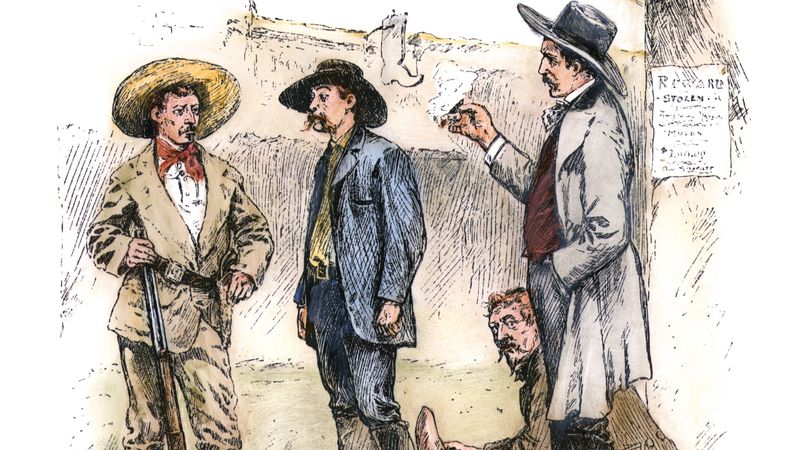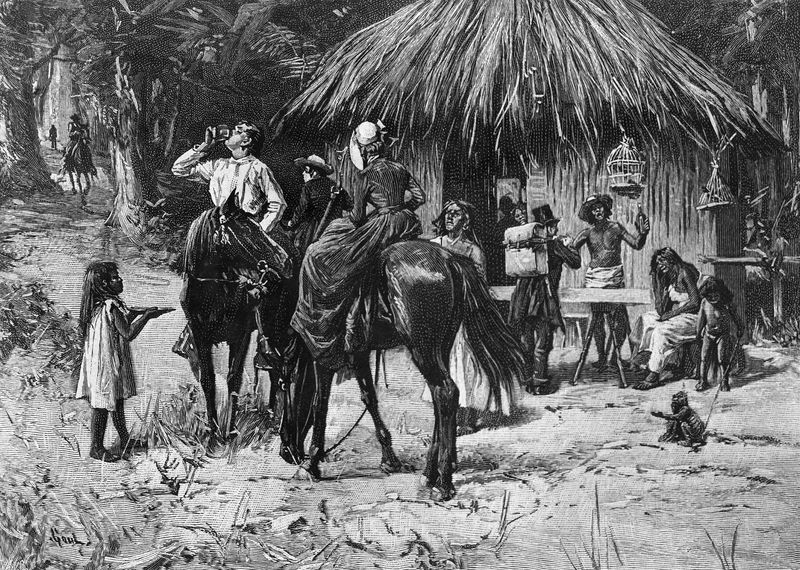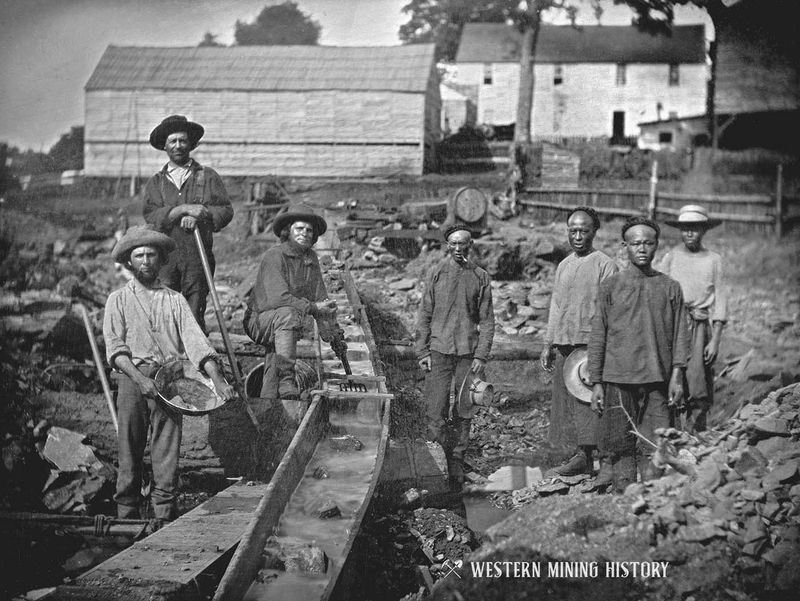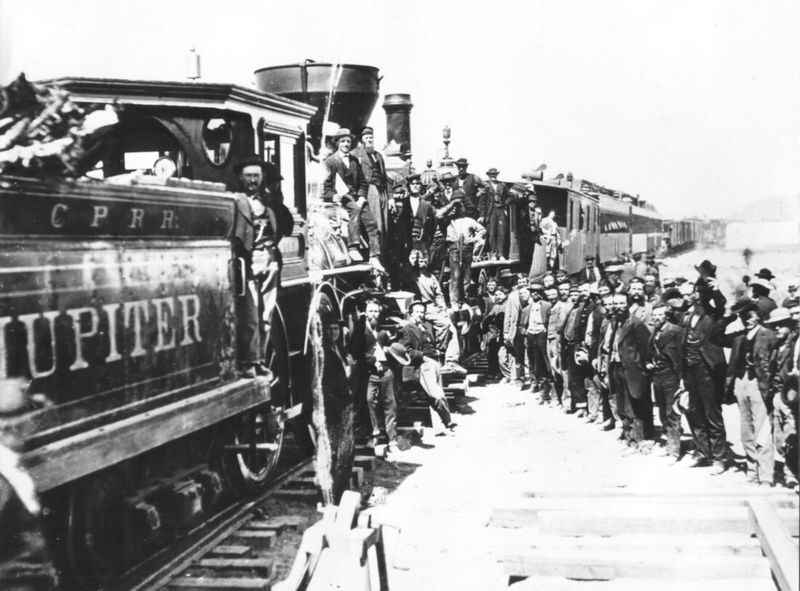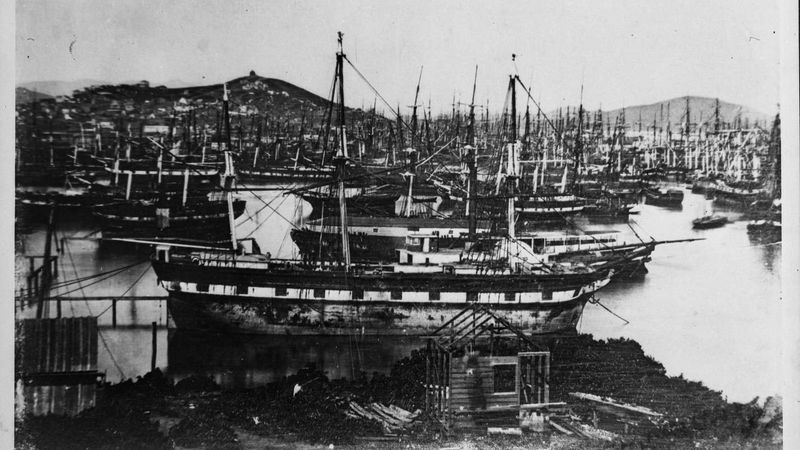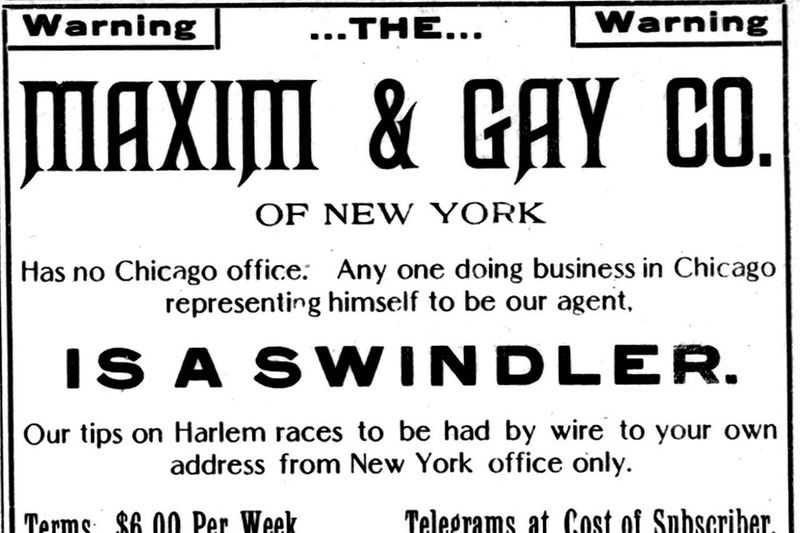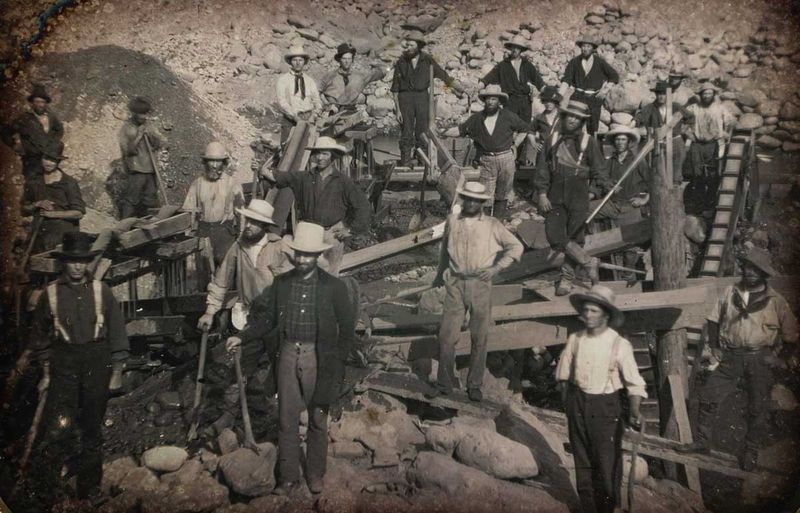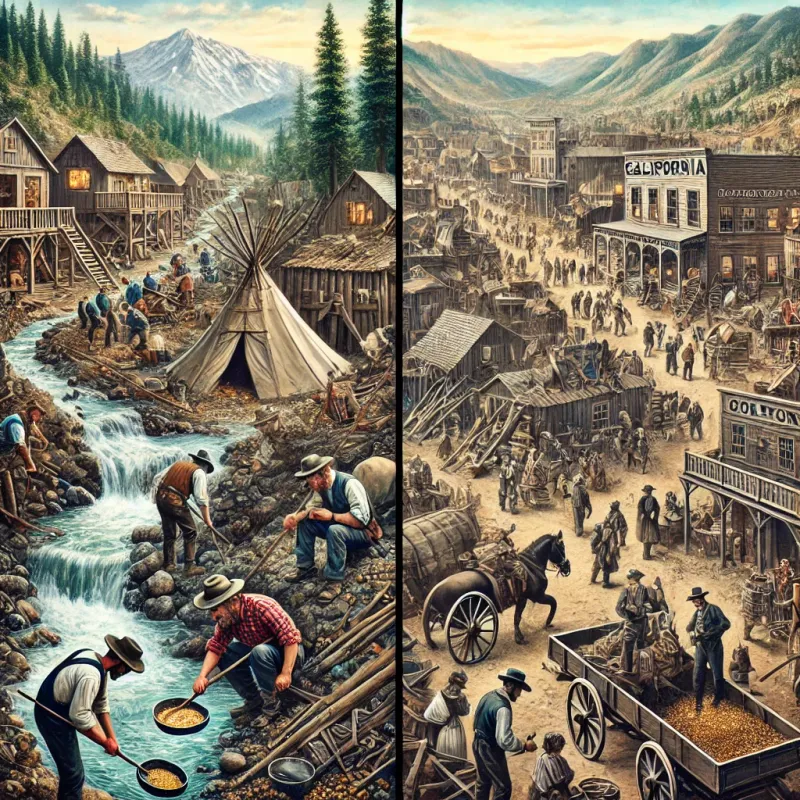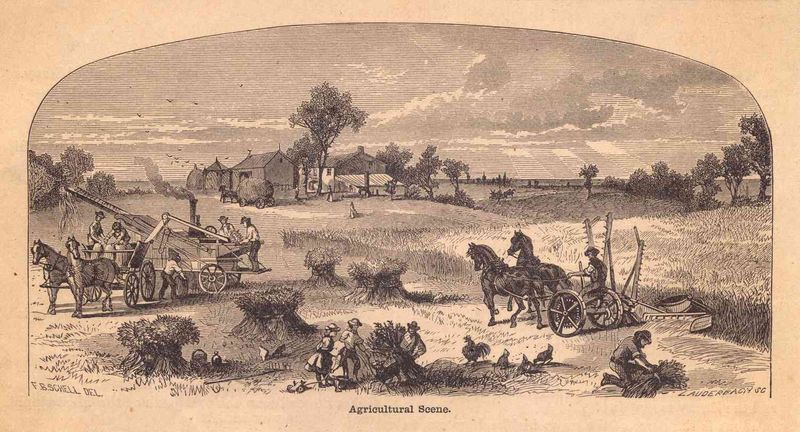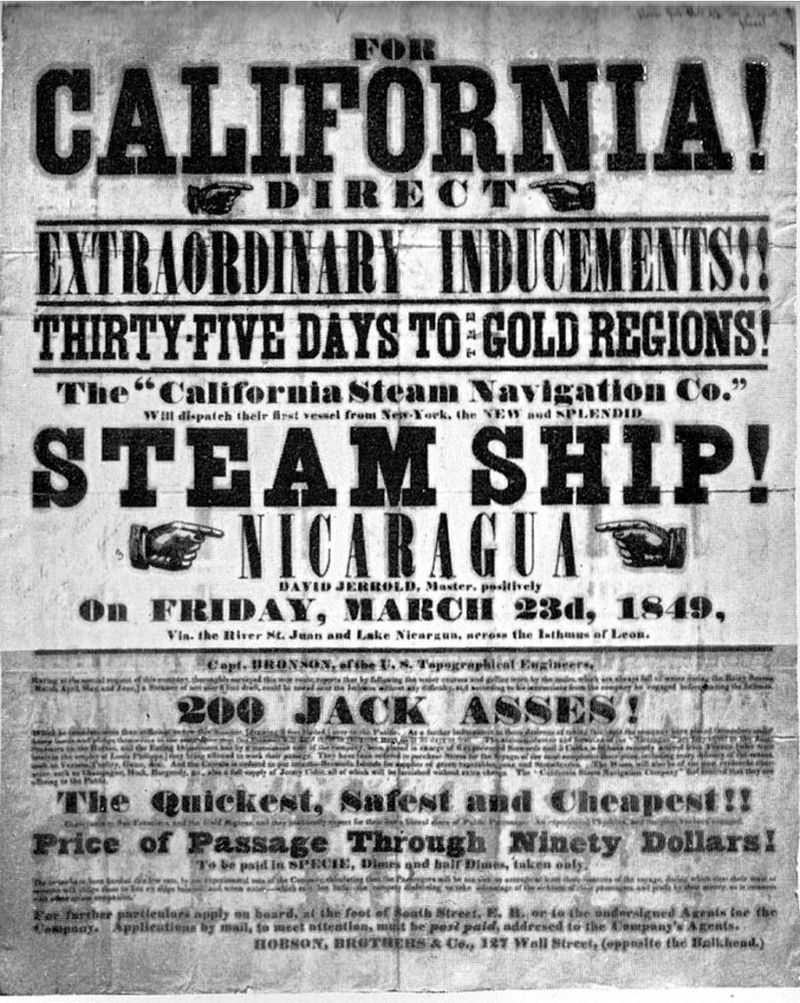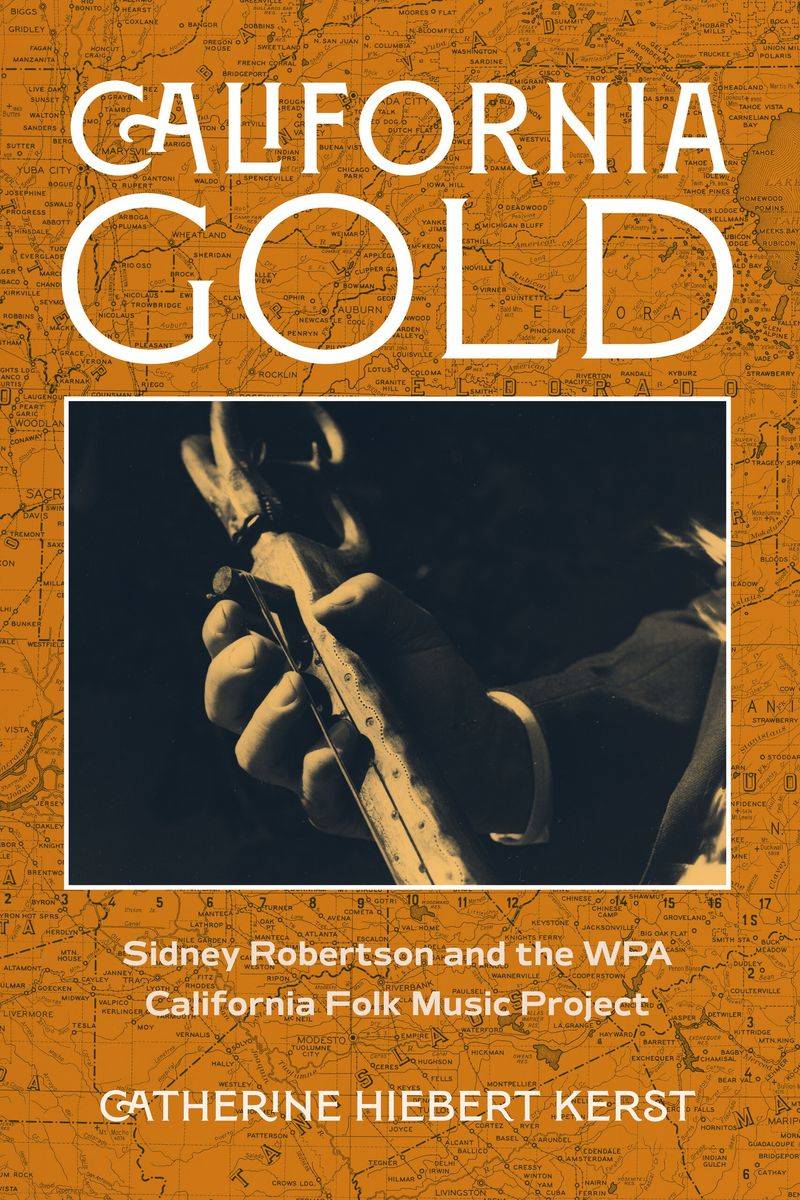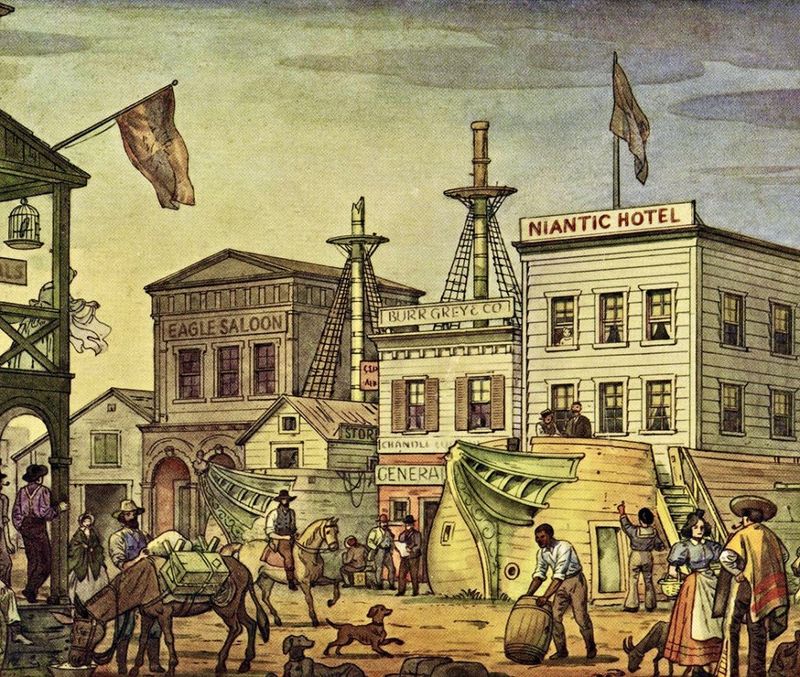The American Gold Rush, spanning from the 1850s to the 1890s, was a time of both opportunity and hardship. While many rushed to the Western United States with dreams of fortune, the reality was often far harsher. This period was marked by a mix of prosperity and struggle, innovation and exploitation. The narratives from this era reveal not only the economic impact but also the social and environmental consequences. Here, we explore 25 striking truths that paint a vivid picture of the complexities and challenges faced by those who lived through this transformative time.
The Allure of Instant Wealth
The dream of striking it rich instantly captured the imaginations of thousands. Many left their homes and stable jobs, enchanted by tales of abundant gold just waiting to be picked up. However, the dream often turned into a harsh reality. Few found the wealth they sought, and many returned home empty-handed, burdened by debt. The promise of easy money was a powerful motivator, driving an unprecedented migration. Yet, for most, the gold remained elusive, leaving only the hard lessons of risk and reward in its wake.
Harsh Living Conditions
Life for miners was far from glamorous. They lived in rudimentary camps, often facing overcrowding and unsanitary conditions. These temporary settlements were breeding grounds for disease, with little access to clean water or proper sanitation. The constant struggle for basic necessities made life grueling. Despite the hardships, the promise of gold kept spirits high. Yet, the daily reality was a far cry from the dreams that brought them there. The harsh environment tested their resilience and determination at every turn.
Environmental Impact
The quest for gold left an indelible mark on the environment. Miners used techniques like hydraulic mining, which involved blasting high-pressure water jets to dislodge gold. This led to significant soil erosion and habitat destruction. Rivers were choked with sediment, affecting aquatic life and downstream communities. The environmental consequences were profound, altering landscapes irreversibly. These practices highlighted the tension between economic gain and environmental stewardship, a debate that continues today. The scars of the Gold Rush still mark the land, serving as a cautionary tale.
The Role of Women
Women played a crucial yet often overlooked role during the Gold Rush. While predominantly a male pursuit, women contributed significantly by running boarding houses, laundries, and other essential services. Some even engaged directly in mining activities. These women defied societal norms, showcasing resilience and entrepreneurship. Their presence was vital in shaping the burgeoning communities. As they took on diverse roles, women laid the groundwork for future generations, challenging gender stereotypes and expanding their influence beyond traditional domestic spheres.
Exploitation and Labor
The demand for labor attracted workers from all over the world, including many immigrants. These laborers often faced exploitative conditions, working long hours for little pay. Racism and discrimination were rampant, with non-white miners frequently marginalized. Despite these challenges, they contributed significantly to the mining efforts. The harsh labor conditions underscored the broader social inequalities of the time. This era highlighted both the promise of new beginnings and the persistence of old prejudices, revealing a society grappling with its ideals of freedom and equality.
Boomtown Phenomenon
Boomtowns sprang up almost overnight as prospectors flocked to gold-rich areas. These towns were lively and chaotic, marked by rapid construction and a mix of cultures. However, their fortunes were tied to the fickle nature of gold discoveries. When the gold ran out, many boomtowns were abandoned just as quickly as they appeared. These ghost towns are a testament to the transient nature of the Gold Rush. They reflect the fleeting prosperity and the speculative frenzy that defined this era of American history.
Mining Technology Innovations
The Gold Rush spurred technological innovations in mining techniques. Hydraulic mining was one such advancement, allowing miners to process larger volumes of soil quickly. Innovations like sluice boxes and stamp mills increased efficiency. However, these technologies also had detrimental environmental impacts, disrupting ecosystems and landscapes. While they made gold extraction more efficient, they also accelerated environmental degradation. This duality of progress and destruction is a hallmark of the Gold Rush, illustrating the complex relationship between technological advancement and its consequences.
Cultural Exchanges
The Gold Rush was a melting pot of cultures, with people from around the world converging in search of fortune. This diversity led to rich cultural exchanges, influencing language, cuisine, and traditions. The mingling of different ethnic groups fostered a unique, albeit sometimes tense, cultural landscape. These interactions left a lasting impact on California’s cultural identity. The era was a testament to the transformative power of cultural exchange, as it reshaped communities and forged new, albeit complex, social dynamics amidst the pursuit of gold.
Economic Boom and Bust
The Gold Rush triggered an economic boom, attracting investment and stimulating growth in various sectors. Towns flourished as businesses catered to the needs of miners. However, the gold deposits were finite, leading to inevitable busts. Once the easily accessible gold was depleted, many towns faced economic collapse. The boom-and-bust cycle became a defining feature of the Gold Rush. It underscored the volatility of resource-based economies and the risks involved in depending on a single commodity for economic prosperity.
Law and Order Challenges
The rapid influx of people led to challenges in maintaining law and order. Many Gold Rush towns were lawless, with makeshift justice systems struggling to keep up with crime. Saloons, gambling, and disputes over claims often led to violence. Vigilante justice was common, as formal legal structures lagged behind the population explosion. This period highlighted the difficulties in establishing governance in rapidly growing communities. The struggle to maintain order amidst the chaos was a constant challenge, reflecting the broader lawlessness of frontier life.
Native American Displacement
The Gold Rush had a profound impact on Native American communities, leading to widespread displacement and cultural disruption. As miners encroached on indigenous lands, native populations were pushed aside. This resulted in significant loss of land, resources, and traditional ways of life. The displacement was often accompanied by violence and broken treaties. The Gold Rush era marked a tragic chapter in the history of Native American displacement, illustrating the devastating consequences of unchecked expansion in the pursuit of wealth.
The Role of African Americans
African Americans played a significant role in the Gold Rush, both as free individuals and as slaves. They worked as miners, cooks, and laborers, contributing to the development of mining camps. Despite facing discrimination and prejudice, many pursued the promise of freedom and opportunity. Their experiences highlighted the racial dynamics of the time and the complexities of their participation in the Gold Rush. This period was a precursor to broader civil rights movements, as African Americans sought to assert their rights and gain a foothold in a rapidly changing society.
Transportation Revolution
The Gold Rush spurred a transportation revolution, with stagecoaches, railroads, and steamships facilitating the movement of people and goods. This infrastructure development was crucial in connecting remote mining areas with larger markets. The increased accessibility transformed the Western United States, contributing to its economic growth. These advancements also laid the groundwork for future transportation networks. The era was pivotal in modernizing travel and commerce, reflecting the transformative power of the Gold Rush in shaping the nation’s infrastructure.
The Rise of San Francisco
San Francisco emerged as a central hub during the Gold Rush, rapidly transforming from a small settlement to a bustling city. Its strategic location made it the primary gateway for prospectors and supplies. The influx of people and wealth fueled its growth, leading to the development of infrastructure and services. San Francisco’s rise exemplifies the broader urbanization trends of the Gold Rush era. It became a symbol of opportunity and ambition, attracting a diverse population seeking their fortunes in the vibrant city by the bay.
Speculative Frenzy and Scams
The Gold Rush was characterized by a speculative frenzy, with people eager to invest in mining ventures and related businesses. This environment created opportunities for scams and fraudulent schemes. Unscrupulous individuals exploited the optimism and naivety of newcomers, selling worthless claims or overvalued shares. Many lost their savings to these scams, learning harsh lessons about greed and deception. The speculative nature of the Gold Rush highlighted the risks of unchecked ambition, serving as a cautionary tale of the darker side of financial speculation.
Immigrant Contributions
Immigrants played a crucial role in the Gold Rush, bringing diverse skills and perspectives. They came from countries like China, Mexico, and Europe, each contributing to the evolving mining culture. Despite facing discrimination, these groups were integral to the success of mining operations. Their cultural traditions enriched the communities they joined, leaving a lasting legacy. The Gold Rush era underscored the importance of immigration in shaping American society. It was a testament to the enduring influence of immigrants in building and sustaining vibrant, multicultural communities.
The Birth of California Statehood
The Gold Rush was pivotal in California’s journey to statehood. The massive influx of people and economic growth accelerated its admission to the Union in 1850. This rapid transformation from a sparsely populated region to a bustling state was unprecedented. California’s statehood marked a significant milestone in American history, influencing the nation’s political and economic landscape. The Gold Rush shaped California’s identity, laying the foundation for its future prosperity. This period remains a defining chapter in the state’s history, symbolizing its dynamic and pioneering spirit.
The Impact on Agriculture
The Gold Rush indirectly stimulated agricultural development in California. As mining settlements grew, so did the demand for food and supplies. This led to the expansion of farming and ranching to meet the needs of the burgeoning population. The fertile valleys of California became breadbaskets, contributing to the state’s economic diversification. The agricultural boom also attracted more settlers, further boosting the region’s growth. This transformation underscored the interconnectedness of mining and agriculture, showcasing the broader economic impact of the Gold Rush on California’s development.
The Role of Newspapers
Newspapers played a vital role during the Gold Rush, spreading news and information to eager audiences. They chronicled the adventures and trials of prospectors, shaping public perceptions of the era. These publications served as essential communication tools, linking distant communities. The demand for timely updates spurred the growth of local journalism, contributing to the development of a robust media landscape in California. The role of newspapers highlights the power of media in influencing public opinion and documenting the transformative events of the Gold Rush.
The Creation of Wealth for Some
While many left empty-handed, a few struck it rich during the Gold Rush. Successful prospectors and savvy entrepreneurs amassed significant wealth, forever changing their fortunes. These individuals often reinvested their earnings into businesses and land, contributing to the region’s economic growth. Their success stories fueled the mythos of the Gold Rush, inspiring countless others to seek their fortunes. However, these tales of wealth were exceptions rather than the norm, reflecting the unpredictable nature of prospecting. The era’s legacy is a complex tapestry of triumphs and tribulations.
Cultural Legacy and Folklore
The Gold Rush left a rich cultural legacy, with stories and folklore that continue to captivate imaginations. These tales of adventure, hardship, and fortune are woven into the fabric of American culture. The era inspired literature, music, and art, reflecting the broader societal impacts of the Gold Rush. This cultural heritage preserves the spirit of exploration and ambition that defined the period. Through storytelling and tradition, the Gold Rush remains alive in the collective memory, offering insights into the human experience and the quest for prosperity.
The Rise of Vigilantism
With the rapid growth of mining towns and the absence of established law enforcement, vigilantism became a common practice during the Gold Rush. Citizens took justice into their own hands, forming committees to address crime and maintain order. While some vigilantes sought genuine justice, others acted out of prejudice or personal vendettas. This extrajudicial enforcement highlighted the challenges of governance in frontier communities. The rise of vigilantism reflects the complex dynamics of law, order, and community in the volatile environment of the Gold Rush.
Long-term Environmental Consequences
The environmental impact of the Gold Rush continues to be felt today. The intensive mining practices resulted in lasting damage to ecosystems and landscapes. Abandoned mines, toxic runoff, and disrupted waterways remain as reminders of the era’s ecological toll. These long-term consequences underscore the need for sustainable practices in resource extraction. The legacy of environmental degradation from the Gold Rush serves as a cautionary tale, highlighting the balance between economic development and environmental preservation. This enduring impact calls for continued efforts to rehabilitate affected areas.


